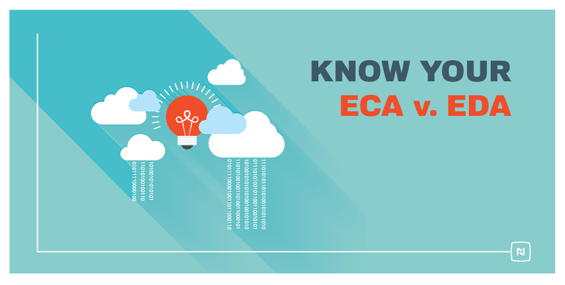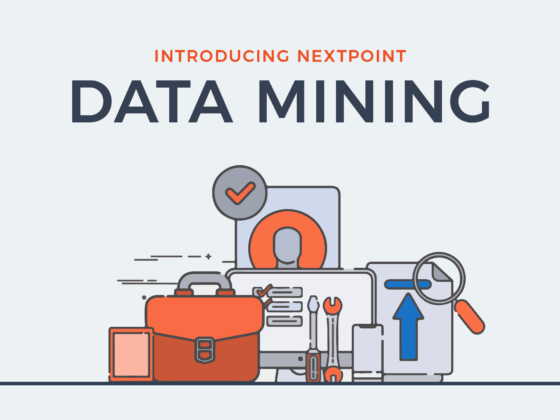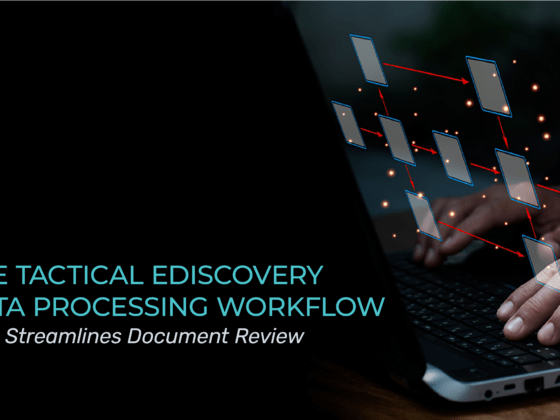Early Case Assessment and Early Data Assessment are key parts of building a strong strategy for your case. Read on to learn the role each play in litigation.
You’ve got a new litigation that’s been filed either by, or against your client. You quickly find that it involves a seemingly insurmountable mountain of data. The endless sea of files may be vital to your case. Or they may be digital deadweight.
What’s the next step — Early Case Assessment (ECA) or Early Data Assessment (EDA)?
As volumes of digital data explode in the legal field, more and more attorneys are finding themselves in this scenario. As a result, concepts like ECA and EDA have been cropping up more frequently across the litigation landscape, and the purpose of these processes has expanded.
Confusingly, the terms are often used interchangeably. But there is a difference.
Early Case Assessment
Not every case is viable in a court of law – as most litigators know, only a small percentage of cases actually make it to trial. Before attorneys and their clients spend extensive time and money working on a case, it’s important to assess the facts, evidence and claims at hand to better understand the possible outcomes. That’s where Early Case Assessment comes in.
Early Case Assessment (ECA) is the process of evaluating the strengths and weaknesses of a case prior to investing substantial resources in litigation. The result of ECA should be a monetary calculation of what the litigation is worth to the parties involved in relation to the predicted expenses. From there, litigators and clients can decide their path moving forward – is it already time to call it quits? Will you aim for a settlement, or push all the way to trial?
Early Data Assessment
Early Data Assessment (EDA) should be one of the arrows in your quiver during Early Case Assessment to establish the relative strength of the case. As a subset of ECA, Early Data Assessment involves using data analytics and advanced ediscovery filtering techniques to understand the contents of digital data at the outset of a matter.
The primary goal of an Early Data Assessment project is to conduct an initial review and identify specific documents or other pieces of evidence that establish the strength and weakness of the litigation position.
In short, Early Data Assessment is an essential first step in doing an Early Case Assessment. Just ignore the “early,” call it Data Assessment, and it becomes easier to understand how these two processes work together. Assessing the data allows you to assess the strength of the case.
New Solutions for Early Data Assessment
With the rapid growth of electronic evidence in litigation and advancements in legal tech, the uses and benefits of Early Data Assessment have expanded. While assessing the viability of your case, you can also begin to detect key themes hiding in the mass of data. Completing a risk-benefit analysis is no longer the only focus – Early Data Assessment is about doing everything you can in the early stages of discovery to understand the data you’re dealing with. That way, you can enter document review with a strategy and save time and money as a result.
Nextpoint recently launched Data Mining, a new groundbreaking technology for Early Data Assessment. With extensive customizable reporting and analytics, as well as machine learning features like transcription and translation, the options for organizing and understanding your data are limitless. With this tool, your Early Case Assessment results in more than a monetary calculation – it becomes a strategic plan and roadmap for your discovery process.
Early Data Assessment Components
Here are the components to look for in an effective Early Data Assessment project:
★ Security and Speed in Data Assessment
Secure data hosting and high-speed processing are essential elements of successful EDA. Legal teams should choose to store their data on a cloud-based platform that offers multiple layers of security protection, like encryption and two-factor authentication.
Ingesting terabytes of data is no easy feat for most applications, so attorneys should also be sure to choose a platform that can handle their volume of data and process it in a timely manner. Nextpoint’s Data Mining can process 10 Terabytes of data a day for each account – that’s 10,000 Gigabytes. Platforms with similar processing speeds will ensure that your Early Data Assessment will stay on course and meet any deadlines.
★ Filtering and Culling Data
The first step in paring down a mass of data is utilizing strategic filtering and culling techniques. Deduplication is an essential process that removes repeat files from your data set. DeNISTing eliminates system files, program files, and other computer files not created by a user. You can also cull ediscovery data based on other criteria, such as files that were created outside of the timeframe of the case.
★ Searching Your Data
Preliminary search terms can be run and the results analyzed to understand themes and trends in the data. Based on the initial results, search terms can easily and quickly be removed, expanded, stemmed and modified, so that subsequent data sets can be analyzed in the same manner. As you conduct searches, you should focus on identifying key custodians and key relationships while narrowing your search for potential smoking guns.
Be sure to choose a platform with advanced search features to keep your data analysis consistent and simple. Nextpoint’s Data Mining allows users to save and edit searches. You can also create “slices” to analyze by combining various search criteria, like key phrase and date range. Different platforms will offer various ways to track your findings, but without specialized ECA software, you may have to manually log your results.
★ Data Assessment Reports
Quality reports are a key part of EDA, as they will be the culmination of all your searching, filtering and refining of data. Reports provide a holistic view of your data, allowing you to track data volumes, see running themes, and spot trends that will help you narrow in on only the information that you need. At this stage, your goal is to identify the key custodians, view the flow of information, and capture the relevant files.
When looking for ECA software for your case, be sure to take a look at the reports each platform offers. Are there helpful default options that will make your analysis easier? Are the reports customizable so that you can tailor them to your case? Data Mining offers default templates like the search hit report and batch summary report, which can be customized to meet the needs of each individual case.
Wrapping Up Early Case Assessment
Once data is processed and filtered and you’ve compiled detailed reports based on relevant search criteria, you can confer with your team and your client for final analysis and conclusions. With the important pieces of data in hand, you can now undertake an Early Case Assessment – establishing the monetary value of the matter in relation to any ‘smoking guns’ (good or bad) that have been uncovered by the EDA process. With that knowledge, you can weigh the pros and cons of possible paths the case could take, like a settlement, arbitration or trial, and determine your game plan moving forward.
Benefits of Early Case Assessment and Early Data Assessment
By discovering key information early in a matter, you can refine your strategy and quickly move forward with your case. Entering document review with a strategic plan will allow you to drastically reduce the time and expenses spent on ediscovery. And the information uncovered at this stage informs the rest of the litigation process, preparing you for Meet and Confers, the beginning of document review and development of themes to use during depositions and trial preparation.
Successful ECA requires the right tools. Click here to learn more about Nextpoint’s new Data Mining app.







